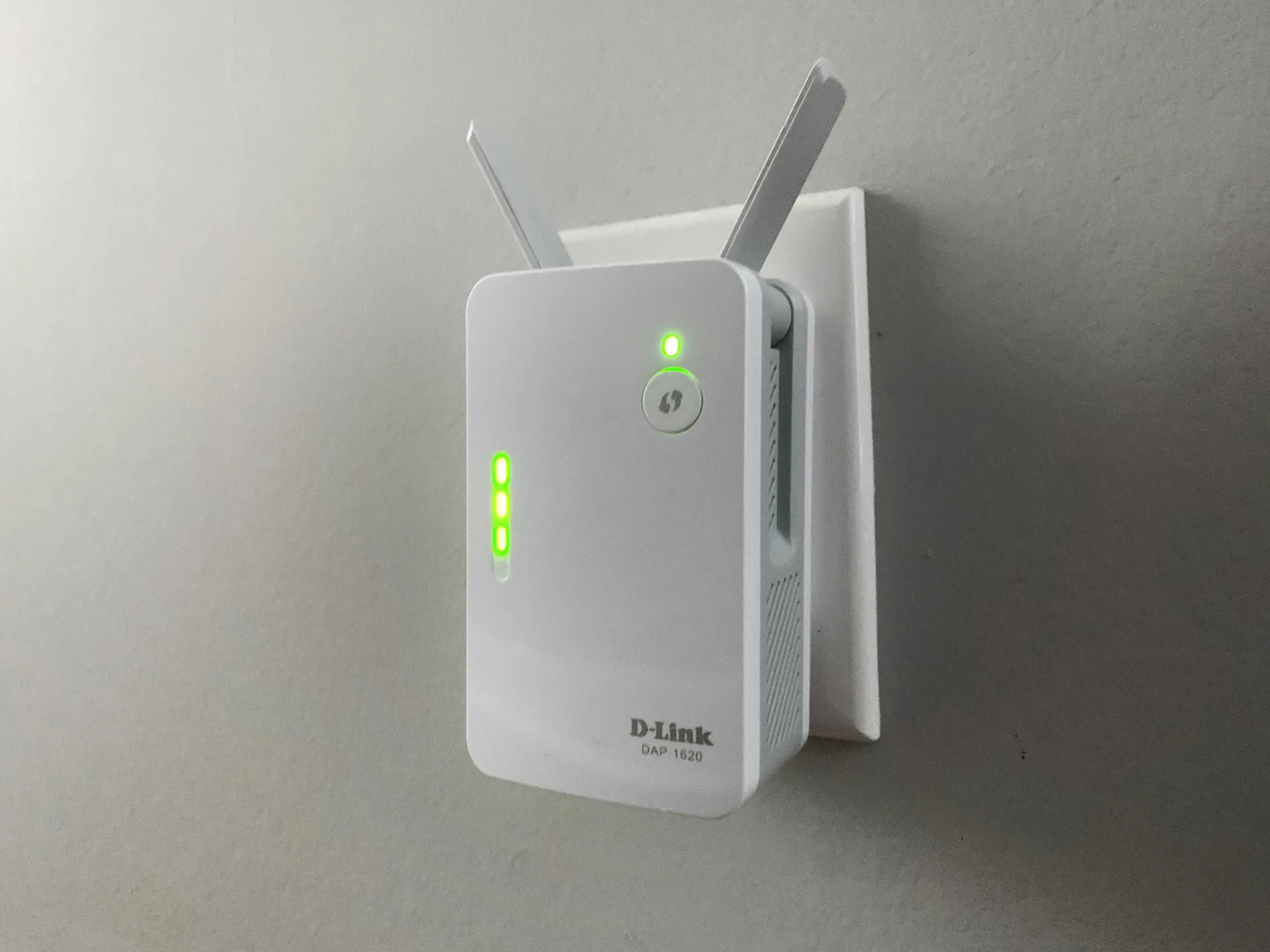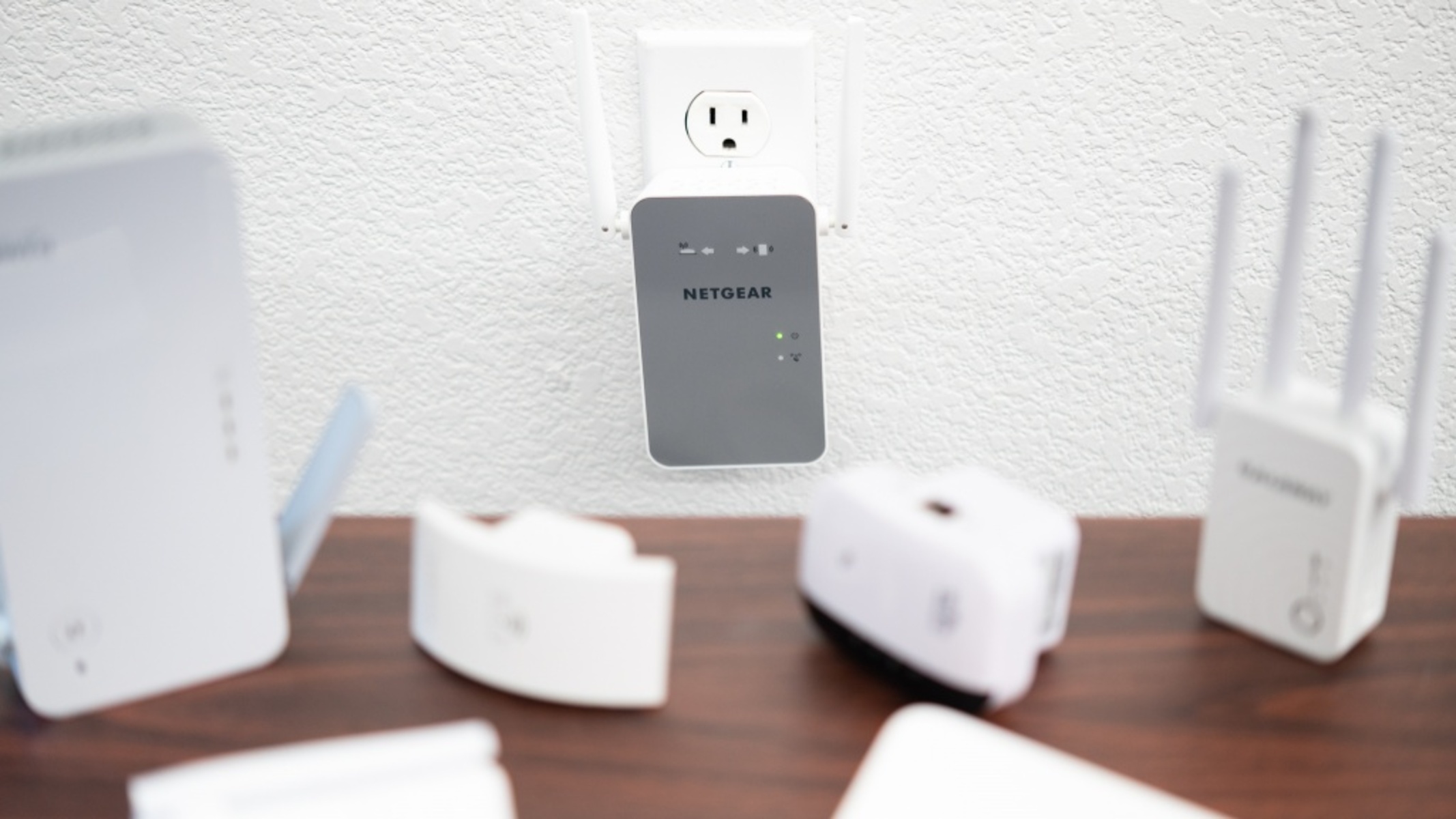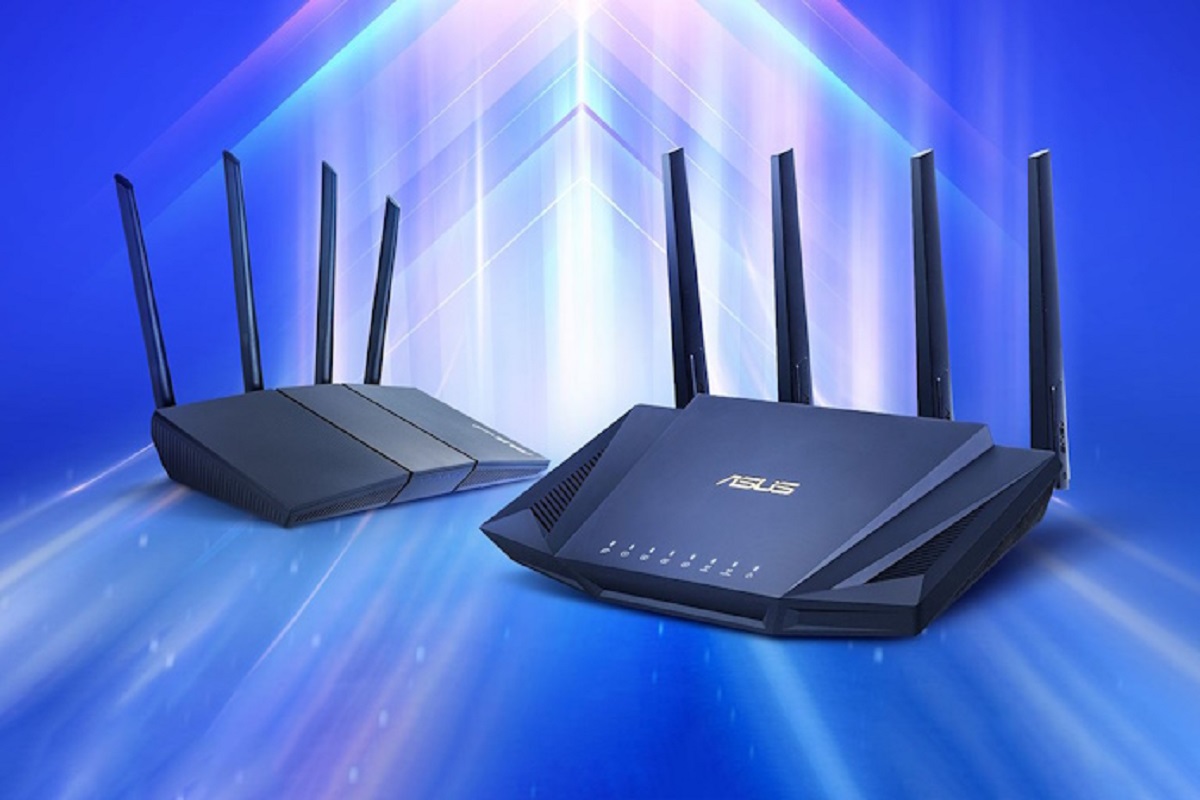Introduction
Welcome to the world of mesh wifi extenders! If you’ve ever struggled with weak or unreliable wifi signals in certain areas of your home or office, you’re not alone. Thankfully, mesh wifi extenders offer a solution to this common problem, providing seamless wifi coverage throughout your space. In this article, we’ll delve into what exactly a mesh wifi extender is, how it works, its benefits, factors to consider when choosing one, and tips for setting it up and troubleshooting.
Gone are the days of relying on a single wifi router to cover your entire property. With a mesh wifi extender, you can create a robust network that blankets your space with strong, reliable wifi signals. Whether you have a large home, multiple floors, or a challenging layout, a mesh wifi extender can ensure that every corner of your space is connected.
Before we dive into the details, let’s clarify what exactly a mesh wifi extender is. Essentially, it is a device that amplifies and extends your existing wifi network. It works in conjunction with your main router to create a mesh network, utilizing multiple nodes placed strategically throughout your space to ensure consistent coverage.
This technology eliminates the need for traditional wifi extenders, which often require separate networks and can result in a drop in signal strength. With a mesh wifi extender, you can seamlessly move around your space without experiencing any disconnects or signal drops. It’s like having a powerful wifi network that follows you wherever you go.
Stay tuned as we explore how a mesh wifi extender works, the benefits it offers, and how to choose the best one for your needs.
What is a Mesh Wifi Extender?
A mesh wifi extender is a device that enhances and extends the range of your wifi network by creating a mesh network. Unlike traditional wifi extenders, which often result in a drop in signal strength and require separate networks, mesh wifi extenders work in conjunction with your main router to provide seamless coverage throughout your space.
Think of a mesh wifi extender as a team of devices working together to ensure that every corner of your home or office is connected. Instead of relying on a single router, a mesh network utilizes multiple nodes strategically placed around your space to create a powerful and reliable wifi network.
Each node in the mesh network communicates with the others, creating a seamless and continuous connection. This means that as you move from one part of your space to another, your device will automatically connect to the node with the strongest signal, ensuring a smooth transition without any drops or interruptions.
One of the key advantages of a mesh wifi extender is its ability to eliminate dead spots and weak signals. Traditional routers often struggle to penetrate walls, floors, and other obstacles, resulting in areas with poor or no wifi coverage. With a mesh network, the nodes work together to overcome these obstacles, ensuring that every part of your space receives a strong and reliable wifi signal.
Furthermore, mesh wifi extenders are designed with scalability in mind. If you need to expand your network, you can simply add more nodes to the mesh. This flexibility allows you to tailor the coverage to the specific needs of your space, whether it’s a small apartment or a large office building.
Overall, a mesh wifi extender is a powerful solution for anyone looking to eliminate wifi dead spots, improve signal strength, and create a seamless wifi experience throughout their space. It offers the convenience of a strong and reliable connection, allowing you to enjoy uninterrupted internet access no matter where you are.
How Does a Mesh Wifi Extender Work?
A mesh wifi extender works by creating a mesh network that extends and enhances your existing wifi network. Instead of relying on a single router to provide coverage, a mesh network utilizes multiple nodes or access points strategically placed throughout your space.
Each node in the mesh network communicates with the others, creating a network of interconnected devices. This allows for seamless roaming and ensures that your device connects to the node with the strongest signal as you move around your space.
When you set up a mesh wifi extender, the first step is to connect the main router to one of the nodes via Ethernet or Wi-Fi. This node acts as the primary access point and broadcasts the wifi signal. The other nodes, also known as satellites or extenders, are placed in areas where wifi coverage needs to be extended.
The nodes communicate with each other using a dedicated wireless channel or a wired connection, depending on the model and configuration. This communication enables the nodes to share information about the network and ensure a smooth transition as you move around.
When your device connects to a mesh network, it automatically selects the node with the strongest signal. As you move closer to another node, your device seamlessly switches its connection to maintain the best possible signal strength. This dynamic handoff between nodes is what makes a mesh wifi extender a superior solution compared to traditional wifi extenders.
Modern mesh wifi extenders also utilize advanced technologies like beamforming and band steering to optimize the network performance. Beamforming focuses the wifi signal to specific devices, improving signal strength and reducing interference. Band steering ensures that devices are connected to the most suitable frequency band (2.4GHz or 5GHz) for optimal performance.
Furthermore, many mesh wifi extenders come with companion mobile apps or web interfaces that allow you to easily manage and monitor your network. These apps provide features such as device prioritization, parental controls, and network diagnostics, giving you greater control over your wifi network.
Overall, a mesh wifi extender works by creating a mesh network of interconnected nodes, providing seamless wifi coverage and ensuring that you have a strong and reliable connection throughout your space.
Benefits of Using a Mesh Wifi Extender
Using a mesh wifi extender offers several benefits that can greatly enhance your wireless networking experience. Let’s take a closer look at some of the key advantages:
1. Seamless Coverage: A mesh wifi extender creates a mesh network that ensures seamless coverage throughout your space. No more dead spots or weak signals. You can enjoy strong and reliable wifi connectivity in every corner of your home or office.
2. Easy Setup: Setting up a mesh wifi extender is typically straightforward and user-friendly. Most manufacturers provide step-by-step instructions or mobile apps that guide you through the process. You can have your extender up and running in no time.
3. Flexible Scalability: If you need to expand your wifi coverage in the future, mesh wifi extenders offer scalability. Simply add more nodes to the mesh network to extend the coverage area. This flexibility ensures that your network can grow with your needs.
4. Seamless Roaming: With a mesh network, you can move around your space without experiencing any drops or interruptions in your wifi connection. The nodes in the mesh network work together to facilitate seamless roaming, automatically connecting your device to the node with the strongest signal.
5. Improved Performance: Mesh wifi extenders are designed to improve the overall performance of your wifi network. With advanced technologies like beamforming and band steering, these extenders optimize signal strength, reduce interference, and ensure that your devices are connected to the most suitable frequency band.
6. Smart Network Management: Many mesh wifi extenders come with companion mobile apps or web interfaces that allow you to easily manage and monitor your network. You can prioritize devices, set parental controls, perform network diagnostics, and more, all from the convenience of your smartphone or computer.
7. Clean and Aesthetically Pleasing: Mesh wifi extenders are often compact and designed to blend seamlessly with your home or office decor. They are less obtrusive than traditional wifi extenders with multiple antennas, making for a cleaner and more aesthetically pleasing setup.
8. Cost-Effective Solution: While mesh wifi extenders may have a higher upfront cost compared to traditional wifi extenders, they can save you money in the long run. Instead of investing in multiple extenders to cover different areas, a single mesh wifi extender can provide comprehensive coverage, eliminating the need for additional devices.
In summary, using a mesh wifi extender offers benefits such as seamless coverage, easy setup, flexible scalability, seamless roaming, improved performance, smart network management, a clean and aesthetically pleasing setup, and a cost-effective solution for your wifi needs. It’s a reliable and convenient solution to eliminate dead spots and enjoy uninterrupted wifi connectivity throughout your space.
Factors to Consider When Choosing a Mesh Wifi Extender
When choosing a mesh wifi extender, it is important to consider several factors to ensure that you select the right device for your specific needs. Here are some key factors to keep in mind:
1. Coverage Area: Evaluate the size of the area you need to cover with your wifi network. Consider the number of floors, walls, and obstacles that may affect signal strength. Choose a mesh wifi extender with enough nodes to provide reliable coverage for your entire space.
2. Speed and Performance: Check the specifications of the mesh wifi extender to ensure it offers fast and reliable speeds. Look for extenders that support the latest wifi standards such as 802.11ac or 802.11ax (Wi-Fi 6) for optimal performance.
3. Node Compatibility: If you already have a router or access point, ensure that the mesh wifi extender is compatible with it. Some extenders are designed to work seamlessly with specific routers or within a specific ecosystem.
4. Scalability: Consider whether the mesh wifi extender allows for expansion in the future. If you anticipate needing to increase your coverage area, choose a system that allows you to easily add additional nodes.
5. Ease of Use: Look for a mesh wifi extender that is easy to set up and configure. Consider whether it offers a user-friendly mobile app or web interface for managing and monitoring your network.
6. Security Features: Check for built-in security features such as WPA2 or WPA3 encryption, guest network support, and parental controls. These features can help protect your network and ensure a safe browsing experience.
7. Additional Features: Consider any additional features that may be important to you, such as Ethernet ports on the extenders for wired connections, USB ports for sharing printers or storage devices, or integration with smart home systems.
8. Budget: Determine your budget for a mesh wifi extender and compare different options within that range. Keep in mind that higher-end models with more advanced features may come with a higher price tag.
9. Reviews and Reputation: Research customer reviews and feedback about the mesh wifi extender you are considering. Pay attention to factors such as reliability, performance, and customer support to make an informed decision.
By considering these factors, you can choose a mesh wifi extender that meets your specific needs, provides reliable coverage, and offers the features and performance that enhance your wireless networking experience.
Setting Up a Mesh Wifi Extender
Setting up a mesh wifi extender is generally an easy and straightforward process. While specific steps may vary depending on the brand and model of the extender, the general principles remain the same. Here are the basic steps to set up a mesh wifi extender:
1. Choose the Right Location: Find strategic locations in your space to place the mesh wifi extender nodes. Ideally, these locations should be within range of your main router and in areas where wifi coverage is weak or non-existent.
2. Power on the Nodes: Plug in the mesh wifi extender nodes into electrical outlets. Allow them a few moments to power up and establish a connection with your main router.
3. Connect to the Main Node: Using the provided Ethernet cable or Wi-Fi connection, connect your main mesh node to the main router. This step may involve entering a device-specific PIN or following the instructions provided by the manufacturer.
4. Follow the Setup Process: Most mesh wifi extenders offer a mobile app or web-based interface for setup. Follow the on-screen instructions to configure your mesh network. This typically involves naming your network, creating a password, and customizing additional settings if desired.
5. Additional Nodes: If you have additional nodes to install, follow the manufacturer’s instructions to add them to your mesh network. This may involve placing the additional nodes in the desired locations and connecting them to the main node wirelessly or with Ethernet cables.
6. Optimize Placement: Once all the nodes are set up, optimize their placement if needed. The goal is to ensure optimal signal strength and coverage throughout your space. You may need to experiment with different locations to achieve the best results.
7. Test the Network: After setting up the mesh wifi extender, test your network by connecting various devices in different areas of your space. Ensure that you have strong and reliable wifi signals throughout your entire coverage area.
8. Configure Additional Features: If your mesh wifi extender offers additional features such as parental controls, device prioritization, or guest network settings, you can configure them as per your preferences.
Remember to consult the user manual or follow the specific instructions provided by the manufacturer for your specific mesh wifi extender model. These guidelines should give you a basic understanding of the setup process and help you enjoy the benefits of a robust and seamless wifi network.
Common Troubleshooting Tips for Mesh Wifi Extenders
While mesh wifi extenders are generally reliable and easy to use, you may encounter occasional issues or challenges. Here are some common troubleshooting tips to help resolve common problems:
1. Restart and Power Cycle: If you’re experiencing connectivity issues, start by restarting your mesh wifi extender system. Power off all nodes and the main router, wait a few seconds, and then power them back on. This simple step can often resolve minor glitches.
2. Check Node Placement: Ensure that the mesh wifi extender nodes are placed in optimal locations. They should be within range of your main router and not obstructed by walls or other objects that can interfere with the wifi signal. Adjust the placement of the nodes if necessary.
3. Verify Network Connections: Confirm that all nodes are properly connected to each other and to the main router. Check the cables and connections to ensure they are secure and undamaged.
4. Update Firmware: Keep your mesh wifi extender firmware up to date. Check the manufacturer’s website or the mobile app for any available firmware updates, as these updates often include bug fixes and performance improvements.
5. Reset and Reconfigure: If you’re still experiencing issues, you can try resetting the mesh wifi extender system to factory settings. Consult the user manual or manufacturer’s instructions on how to perform a reset. Afterward, reconfigure the system and set it up again as if it were a new installation.
6. Optimize Channel Selection: If you notice slow or inconsistent connections, check the wifi channel settings of your mesh wifi extender. Interference from other nearby networks can affect performance. Consider changing the channel to a less crowded one to improve signal quality.
7. Check Band Steering: If your mesh wifi extender supports band steering, make sure it is enabled. Band steering automatically directs devices to the appropriate frequency band (2.4GHz or 5GHz) based on their capabilities, providing optimal performance.
8. Ensure Compatibility: Verify that your devices are compatible with the mesh wifi extender. Some older devices may not support the latest wifi standards or have compatibility issues. Check the device specifications or consult the manufacturer for support.
9. Contact Manufacturer Support: If you have followed these troubleshooting steps and are still experiencing issues, reach out to the manufacturer’s support team. They may provide additional guidance or offer specific solutions tailored to your situation.
By following these troubleshooting tips, you can overcome common difficulties and maximize the performance and reliability of your mesh wifi extender system. Remember to consult the user manual and manufacturer’s support resources for more detailed instructions and solutions specific to your device.
Conclusion
Mesh wifi extenders are a game-changer when it comes to improving wifi coverage and eliminating dead spots in your home or office. With their ability to create a seamless mesh network, these extenders ensure reliable and consistent wifi connectivity throughout your entire space.
In this article, we explored the concept of mesh wifi extenders, understanding how they work, the benefits they offer, factors to consider when choosing one, setting up the system, troubleshooting common issues, and optimizing performance.
By investing in a mesh wifi extender, you can enjoy the convenience of a robust, seamless network that meets the demands of our increasingly connected world. No longer will you have to deal with frustrating wifi dead spots or unreliable signals. With a mesh network in place, you can confidently browse the internet, stream media, work remotely, and connect all your devices without interruption.
Remember to carefully consider your specific needs when choosing a mesh wifi extender, paying attention to factors such as coverage area, speed and performance, scalability, ease of use, security features, and additional functionalities.
Once you have selected the right mesh wifi extender, follow the setup instructions provided by the manufacturer to ensure a smooth installation. Optimize the node placement, update firmware regularly, and troubleshoot any issues that may arise to maintain optimal performance.
With a well-designed mesh wifi extender system in place, you can enjoy the benefits of fast, reliable, and seamless wifi coverage throughout your home or office. Say goodbye to frustrating dead zones and weak signals, and embrace the convenience and productivity that a strong wifi network brings.

























